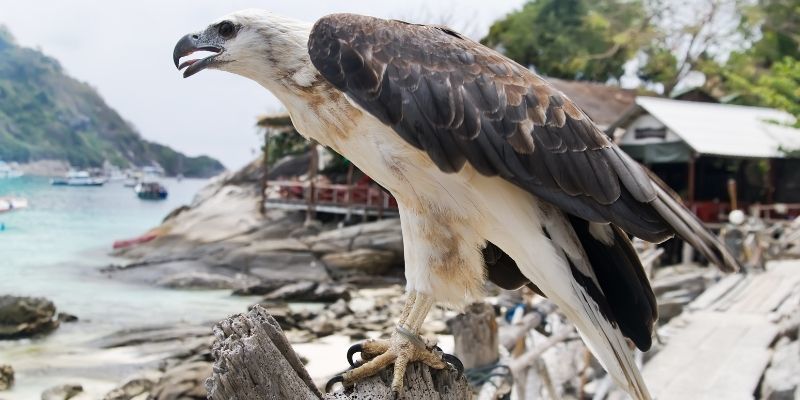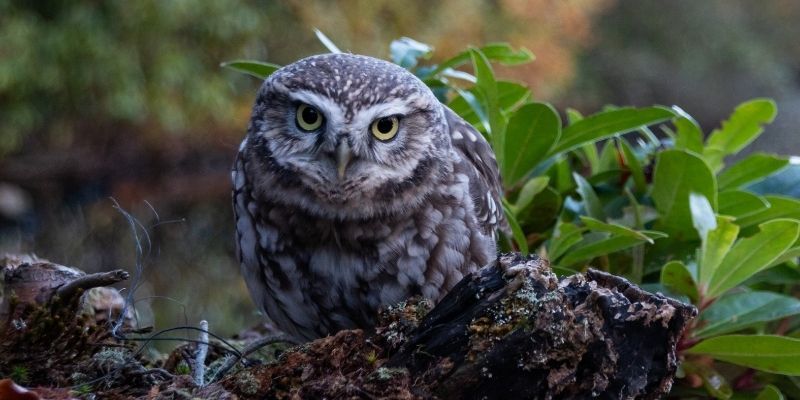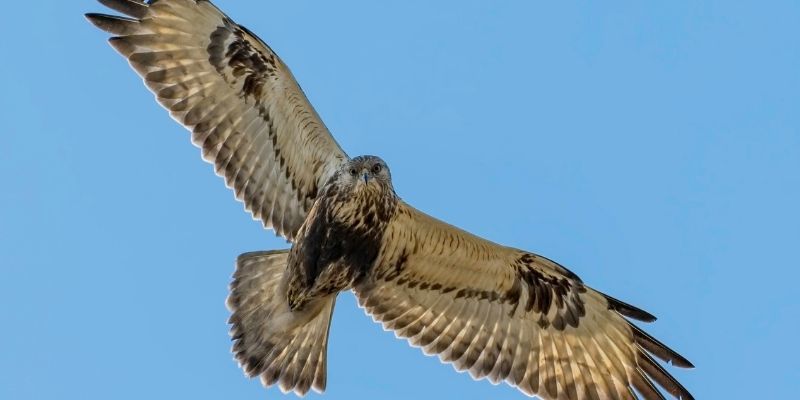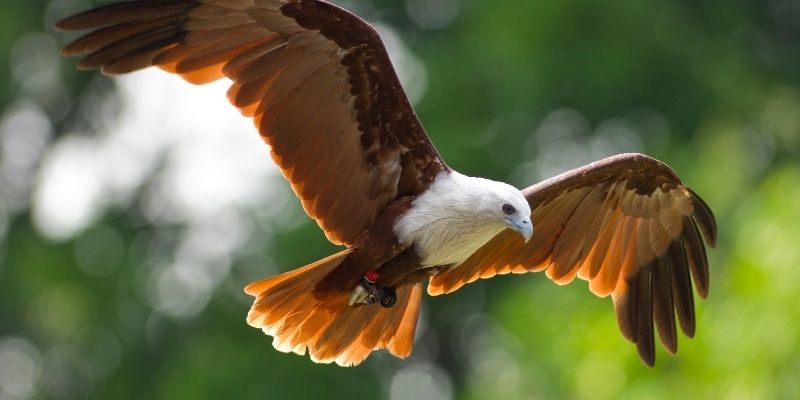Everything You Need to Know About Birds of Prey
Everything You Need to Know About Birds of Prey
It’s hard not to be impressed by birds of prey. Their sharp talons, lengthy wingspan and typically stunning appearance make them fascinating to look at. Their impeccable eyesight, hearing and lightning-fast agility make them truly awe-inspiring when you are lucky enough to witness them in action.
Whether you are watching them scour landscapes for their next feed on shows presented by the likes of David Attenborough, or you come across one in real life, it can be hard to take your eyes off them as you watch them soar with elegance and precision.
If you, like many others, are captivated by these creatures, you might be interested in taking your knowledge about them further. Perhaps you have an active bird watching hobby, or you aspire to work with birds of prey in some capacity.
Whatever your goals, we have detailed answers to some of the most asked questions surrounding birds of prey. So, you can satisfy your curiosity and impress others with facts about these magnificent flying predators.
What is a Bird of Prey?
Birds of prey are species of meat-eating birds that hunt and feed on mammals, amphibians, insects, reptiles, rodents and other birds that are large relative to the hunter. While most hunt live food, some like the vultures, are known to scavenge and feed on carrion.
However, not all birds that consume animals are classed as birds of prey. Ornithologists have specifically excluded certain meat-eating bird species from the list, these include:
- Storks
- Herons
- Gulls
- Phorusrhacids
- Skuas
- Penguins
- Kookaburras
- Shrikes
- Insectivorous songbirds
Most birds of prey are solitary animals, as competition for food can be quite fierce. If they do gather in flocks, it’s mostly for the occasion of migration or to take advantage of winter-feeding grounds. In terms of migration, the bird of prey that travels the furthest is the Amur Falcon, which clocks up around 13,600 miles when migrating from Siberia to South Africa.

Are All Birds of Prey Raptors?
Yes, they are! The word raptor translates to ‘to seize of grasp’ in Latin. As such, to be classed as a raptor, birds must have feet with sharp, curved claws or talons and hooked beaks with sharp edges that enable them to catch prey during flight or seize it on the ground.
They also need to have sharp vision to detect their prey from a distance. Raptors also fly in ways that help them hunt, they will glide and soar high above to spot prey from an undetectable distance, then take powerful dives and complete an agile pursuit to capture their meal.
Lots of birds hunt, kill, and eat meat, but if they don’t tick these boxes, they won't be classed as a raptor.
What is the Biggest Bird of Prey?
If you’re wondering which bird of prey has the largest wingspan, that would be the Andean Condor, which can be found in the Andes mountains as well as the Pacific coasts of western South America.
It is the largest flying bird worldwide, weighing up to 15 kilos and having a wingspan of 3 meters. On the other side of the spectrum, the Elf Owl is one of the world’s smallest bird of prey, weighing only 40grams and having a wingspan of only 26.5 centimetres!
Are Owls Birds of Prey?
Yes, owls are part of the bird of prey family! However, they have some defining characteristics and features that set them apart from most raptors.
One key thing about owls is they are typically nocturnal, so they are the bird of prey you are least likely to see. Most other raptors on the other hand are diurnal, so they prefer to hunt during the day.
Appearance-wise, owls are typically ‘fluffier’ and look bulkier and less streamlined than other birds of prey. While this may at first seem like a disadvantage, owls feathers help make their flight almost silent, so they can easily sneak up on prey. Their bulky build helps them carry larger prey too, up to three times their own weight! Their bulkiness also doesn’t hinder them as they are only made for short and strong bursts of flight.

Which Birds of Prey Hover?
If you are wondering how to identify birds of prey in flight, one key feature for certain species is the fact they hover and stay in one place mid-flight to detect their prey.
There are a number of birds of prey that hover, but none more famous than the Kestrel. This is because they can hover more effectively and for longer periods of time than other raptors. The Kestrels can fan their long tails out to help them balance, which keeps them in precise position. Their wings can also flap incredibly quickly, which helps them stay airborne in the same position.
On close inspection, you can see that their heads do not move and remain perfectly still so they can focus their eyes with complete accuracy on the area below.
Why Are Birds of Prey Important?
Being such high performing predators, birds of prey are vital in maintaining the balance in their natural habitats. Their play an important ecological role by eradicating old, sick, and weak animals, which puts less pressure on the food chain and helps manage population numbers.
Birds of prey are also classed as an indicator species, which means that threats to the natural environment are more likely to affect them. By monitoring bird of prey population changes, it is quick to identify the threats posed by climate change, habitat loss, wildlife trade and other environmental threats.
How Many Birds of Prey Are There?
There are two scientific orders that birds of prey, or raptors, belong to the Strigiformes and Falconiformes. These are divided into six groups which have a culmination of around 446 species worldwide.
They include:
- Falcons (63 species)
- Hawks and Eagles (226 species)
- Osprey (1 species)
- Owls (148 species)
- Secretary Bird (1 species in Africa)
- Vultures (7 species)

Are Birds of Prey Under Threat?
Sadly, like a lot of animal species, birds of prey and their natural habitats too face many threats stemming from human activity. Instances of environmental pollution, the use of pesticides, rodenticides and increased urbanisation have all led to plummeting numbers.
Raptors have also historically been seen as a threat or nuisance, which has led to them being killed to protect communities and other animals.
In the UK, many British birds of prey faced near extinction for factors such as these. Since, extensive conservation efforts have led to numbers increasing again and populations once again starting to thrive.
What Birds of Prey Are in the UK?
While there are numerous exotic types of birds of prey in existence across the globe, there are plenty of British birds of prey that live in and around the UK.
Some of the rarer English birds of prey include:
- Merlin
- Peregrine Falcon
- Golden Eagle
- Marsh Harrier
- Osprey
- Hen Harrier
- Short-Eared Owl
- Goshawk
- White-Tailed Eagle
- Long-Eared Owl
The largest bird of prey in the UK is the White-Tailed Eagle, which also carries the name ‘sea eagle’ or more comically the 'flying barn door'. Unfortunately, these gigantic birds are on the endangered species red list, with the remaining ones mostly found on the coasts of northern Scotland. If you’re wondering what is the smallest bird of prey in the UK, it’s the Merlin, which typically resides in the uplands.
Where Can I Watch Birds of Prey?
There are a host of birds of prey UK residents can see from home soil, all of which live in different habitats. These can include anything from woodland to farmland and the more adaptable are now commonly seen in cities.
For this reason, some are easier to spot than others. The birds of prey you are most likely to see include:
- Barn Owl -Grassland and farmland across the UK
- Buzzard - Grassland, farmland and woodland across the UK
- Hobby - Southern and eastern heathlands and wetlands in summer
- Kestrel - Grassland, heathland and sometimes towns across the UK
- Red Kite - Woodland and farmland mainly in Wales and South East England
- Sparrowhawk - Variety of habitats, including gardens, across the UK
- Tawny Owl - Woodland, parks and gardens across the UK
You can also have a bird of prey experience, or simply marvel at them up close in bird of prey centres, zoos and wildlife parks. These organisations often care for endangered or injured birds of prey and raise awareness of the threats they face.

How Can I Study Birds of Prey?
If you want to continue learning about birds of prey, whether it be for a hobby or career purpose, there are courses you can take to further expand your knowledge.
learndirect offers the online Birds of Prey Studies Level 3 Award (RQF), which is designed to advance your understanding of birds of prey over two insightful units. You will explore the species of birds of prey found in the UK, as well as their biological makeup and the habitats they reside in. The various threats these and other raptor species face will also be covered, as will the legislation and organisations that are involved in their protection.
To further extend your knowledge, you will also learn about the common diseases birds of prey can experience, in addition to their basic health and welfare needs, and nutritional requirements. Further to this, you will review the situations where birds of prey may require emergency care. In these instances, you will learn about the methods of rehabilitation that are adopted, as well as the re-release processes.
As an online course, this Level 3 birds of prey course allows you to study raptor theory from home. However, it also provides you with the chance to gain hands-on experience with birds of prey, which is vital for most employment opportunities.
You will complete 1-day of practical experience with a skilled Falconer, in rural Herefordshire at the Wye Valley Falconry. Here you will have the chance to put what you have learnt into practice and get up close with these magnificent creatures.
Start Studying Birds of Prey Today!
If you are ready to take your interest in raptors to another level, studying an online birds of prey course allows you to do so without worry. No matter if you have a busy schedule and existing commitments, you can fit your studies comfortably around your lifestyle.
Being online, the theory part of our course has been designed to give you the most rewarding and engaging experience. You will study fascinating and exciting modules, all focused on these flying apex predators. After which, you will be ready to take the next step in your bird-related hobby or professional career.
Find out more today by speaking with one of our Course Executives on 01202 006 464, contacting us online or clicking below to find out more about our online bird of prey course.
You can also keep track of all animal awareness days and events with our FREE calendar! Download it here.
















